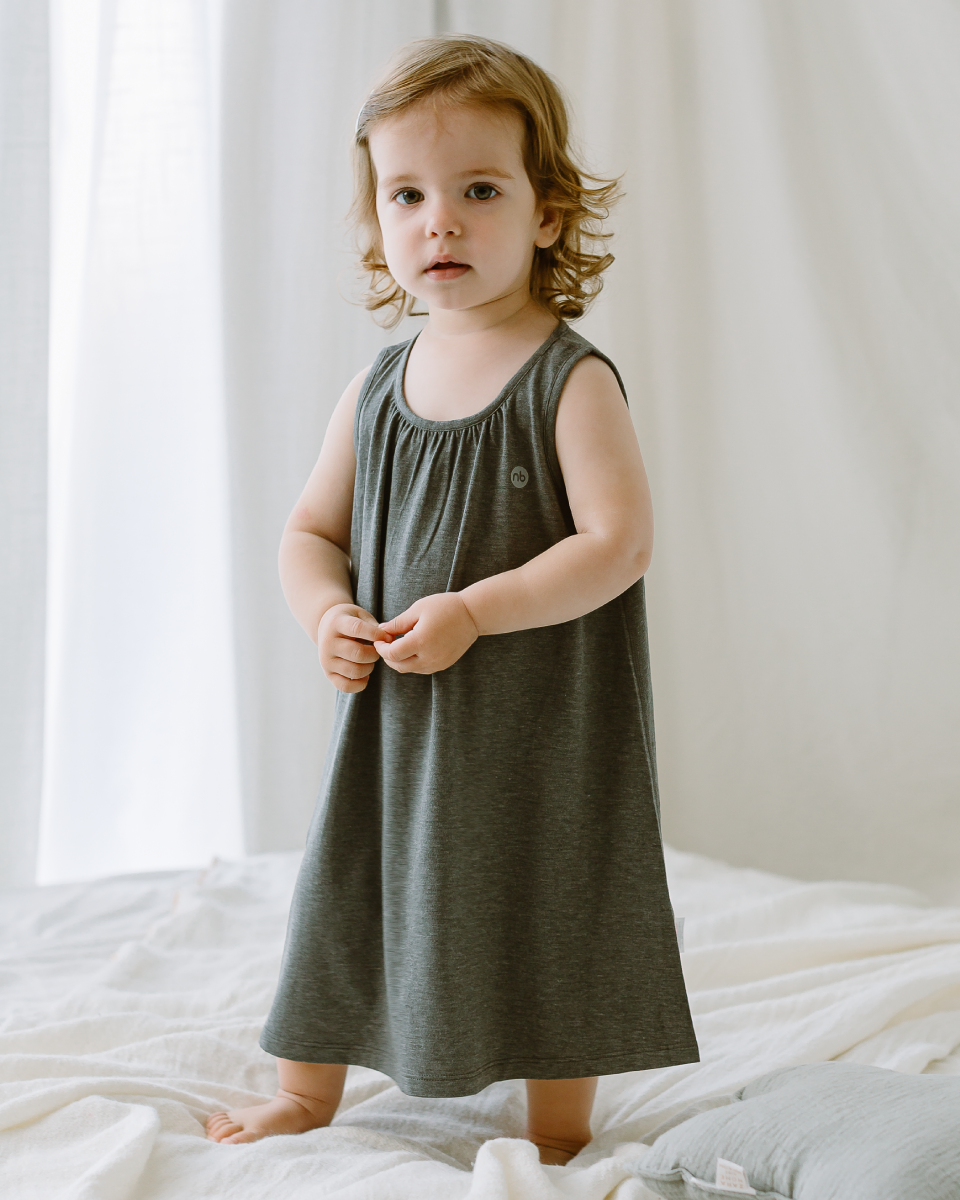
As a parent, you're finely tuned to the patterns of your little bub, including their sleep schedule. When your snuggly little sleeper enters periods from sleeping well to having difficulty snoozing, they may be having a sleep regression. Though regressions can be challenging, knowing what to expect and when can reassure you as your baby goes through these phases.
What is a Sleep Regression?
A sleep regression is when your baby's good sleep habits temporarily disappear. Sleep regressions typically occur during certain phases of development, and your little love's sleep patterns can change rapidly without warning. This change leaves you and your baby short on the sleep you need to shine your brightest.

At What Age Do Sleep Regressions Occur?
Babies can experience sleep regressions at any age, and parents must be prepared to take these disruptions as they happen. There are some typical ages when these regressions happen; however, not all babies have one at every anticipated interval. Here’s when to expect a sleep regression and the growth factors that may contribute to your little love’s changing sleep pattern:

|
The first sleep regression may feel like the hardest one. Your infant's transitioning from their newborn sleep pattern, going through some fast physical growth, and experimenting with movement (rolling over, reaching out). As your little one becomes more aware of their surroundings and their little world starts to expand, their sleep cycle may shift temporarily.
|
 |
Around your little bub’s half-birthday, they’re starting to discover more around them. They respond to sound, they're trying to communicate with babble, they're experts at rolling, and they're starting to sit without help. Some babies may skip right over this sleep regression, but other little cuties need this sleep recalibration.
|
 |
Around eight months, there is a lot happening for your little love. They are more physically active and experimenting with crawling and pulling themselves up. In addition, their growth, emotional development, and learning capability increase every day. Their little teeth are starting to emerge at this age too—another change that contributes to a sleep regression.
|
 |
When your baby enters toddlerhood, they have heightened cognitive skills, they're working on taking their first steps, and their emotional engagement and communication are getting stronger. Emerging independence, discomfort with teething, and other changes at this age may prompt another sleep regression around their first birthday.
|
 |
By 18 months, your little one will conquer walking without help, speaking actual words, using cognitive skills, and deepening their emotional reactions and attachments. These developmental leaps may result in more night time wake-ups, bedtime difficulties, and other sleep regression symptoms.
|
 |
Your toddler grows even more independent around two years old, and there are more life changes that happen around this age. New experiences, transitioning to a toddler bed, starting daycare, and other life events may set them back on sleep. Just like the other regressions before, they’ll need an adjustment period and your love and patience to get through it. Also, this may not be the last sleep regression for your little bub. They may see another one around three-years old so keep an eye out!
|

What Causes Baby Sleep Regression?
Change is constant for babies, and they have much to learn: how to react to their environment, adapt to feeding schedules and new foods, and many other developmental changes. Babies' sleep patterns are linked to and affected by their mental and physical growth. A baby develops so quickly it may create temporary, unstable sleep patterns (otherwise known as sleep regressions).
According to Children's Health, babies are also developing their circadian rhythm, which helps them know when to sleep and when to wake, creating another layer of complexity for families working their way through a regression.
Several factors may contribute to a baby's sleep regression, including:
Is a Sleep Regression a Growth Spurt?
Sleep regressions and growth spurts are related but not the same. Growth spurts refer to periods when your little bub grows physically very quickly. A growth spurt can cause increased hunger, fussiness, and sometimes disrupted sleep patterns—which is why they may contribute to a sleep regression.

What Are Signs of a Sleep Regression?
Every baby has their own version of a sleep regression, which means they have their own signs that there’s a disruption in their usual sleep pattern. Here are the common signs that your baby is in a regression:
- They wake up more often during the night.
- They have difficulty falling asleep, struggle to settle down, and take longer than usual to fall asleep at bedtime.
- Naps have become shorter or less restful during the day.
- They seem more fussy, irritable, or tired than usual because they aren’t getting enough quality sleep.
- You notice changes in their appetite, such as being hungrier than usual or eating at unexpected intervals.
- Their previously consistent sleep schedule has become less predictable.
- They may seek additional comfort from you during wake-ups.
How Long Do Sleep Regressions Last?
Sleep regressions happen on their own schedule but typically last two to four weeks. Every child is different, so their sleep regression may be shorter if they adapt quickly to their developmental changes (or other underlying causes). If a regression starts due to illness, it usually resolves once your little love feels better.
Since these phases often last weeks, a non-sleeping baby affects your snoozing needs, too. Ask for help from partners, family, or friends if you need it. Taking care of yourself during your baby’s sleep regression helps you rest up so you can survive the transition.
What Not to Do During a Sleep Regression
During a baby's sleep regression, there are certain things to avoid, as you may inadvertently reinforce the disrupted sleep patterns or make getting back on track a bit more challenging for you and your little bub. These are the five things you should not do during a sleep regression:
-
Overreact
Staying calm and creating a soothing atmosphere helps your little love feel safe and comfortable.
-
Try new sleep habits
Though comforting your baby always comes first, introducing new habits—like sweetly rocking your little one back to sleep—may become a new comfort that’s hard to break once the sleep regression ends.
-
Change up your routine
Staying consistent with your baby’s sleep routine may feel futile, but trust the routine you’ve created. Consistency with the usual bedtime wind-down can help signal your little one that it’s time to close their eyes.
- Ignore signs of illness or discomfort
Teething babies or sick babies have trouble sleeping because they’re uncomfortable. These underlying issues may be why they're having difficulty nodding off, and addressing them may prompt the return of restful nights.
-
React too quickly
When your little bubs wakes during a sleep cycle, give them a chance to self-soothe and settle back into sleep. Being patient and waiting a moment before going to them may help both of you get back to bed sooner.

Does a Sleep Regression Fix Itself?
It may take a few weeks, but sleep regressions usually right themselves. These sleep disruptions are often temporary, and your little one’s sleep patterns will stabilize again once they adjust to the changes that prompted the regression.
Can You Skip a Sleep Regression?
Sleep regressions are not avoidable; these slumber shake-ups are common for many babies as they reach various developmental milestones. Some babies may seem to skip a sleep regression phase with minimal impact on their sleep patterns, but this isn’t something a parent should expect.
Every baby has a unique experience with sleep regressions. Sticking to your established sleep routine can help you navigate a sleep pattern disruption and make these transition periods a little smoother. This bedtime routine might include activities like a warm bath, wrapping them in their sleep bag or sleep suit, reading a book, or gentle rocking during a lullaby.

How Can I Help My Baby Self-Soothe?
Self-soothing during a sleep regression can help your little bubs settle themselves back to sleep when they wake up through the night. Here are some strategies to help your baby self-soothe:
- Create a peaceful atmosphere and sleep environment that signals that they're safe and can get cozy. Turn on some white noise, dim the lights, and set a comfortable temperature to create an ambience for bedtime.
- Encourage gentle self-soothing techniques such as using a lovey blanket, sucking on their hands, or providing a pacifier if the baby is old enough and it's safe to use. Comfort items must be removed from the crib once your little one drifts off to keep them safe during sleep.
- If your baby usually falls asleep while being rocked or fed, gradually reduce the dependency on these activities by cutting back bit-by-bit until your little bubs doesn't need them to fall asleep anymore. You want to put your baby into their crib while drowsy but awake so they can fall asleep independently.
- Offer comfort and reassurance if your little love needs it. Gently patting or rubbing their back, speaking to them softly, or briefly staying with them can provide comfort without creating dependency on having you help them fall asleep every time.
Teaching self-soothing takes time and patience, and it's normal for your little one to want comfort from you during a sleep regression. Helping them learn self-soothing can make bedtimes and through-the-night wakeups easier and more restful for both of you.

9 Tips to Survive a Sleep Regression
It takes time for babies to develop steady sleep patterns, but you can get through these regressions. Beyond sticking to a bedtime routine and creating a comfortable sleep environment, try these tips to foster good habits and bring peaceful nights back to your home:
- Set a sleep schedule. Set a regular sleep schedule for nighttime sleep and daytime naps to build a positive sleep pattern.
- Play all day. Reinforce a distinction between day and night to adjust your little one’s internal clock – increased activity during the day helps your baby associate playtime with daylight and learn that nighttime is for sleep.
- Practice self-care. Take care of yourself to feel more rested when your baby goes through a sleep regression.
- Look for signs of sleepiness. Rubbing their eyes or being fussy indicates that you should start their bedtime routine.
- Put your tired baby to bed before they fall asleep. Falling asleep in their crib helps them associate it with sleep.
- Let your little bubs try to self-soothe during nighttime wakeups. Give them a minute or two before you comfort them to see if they can get themselves back to sleep.
- Try to keep them in the crib. If they cry in the crib, try to calm them down with a soft voice and gentle back rub instead of picking them up.
- Soothe their gums if they’re teething. Use a cold, damp washcloth on your little one’s gums, let them have a teething toy for a few minutes, or give acetaminophen for serious teething pain (if approved by your baby’s doctor).
- Practice spending time apart. For babies that experience separation anxiety, take short periods through the day to be away from them so they’re more used to being without you at night. At bedtime, have a standard goodnight ritual to help them feel comforted before you leave the room.

How much sleep does my baby need?
Every baby is different and has unique sleep requirements. As they grow, they gradually need less and less sleep. Your little love may be in a regression, but they also may not need as much sleep as their peers. Here’s the approximate amount of sleep a baby should have based on their age group:
- Newborns only sleep one to two hours at a time. They can sleep up to 10 hours at night and about six to eight hours during the day.
- Infants (between two and 12 months) need about 12 hours of sleep at night and two to five hours for naps.
- Toddlers (between one and two years old) sleep between nine and twelve hours at night and only one or two hours during the day.
If you’re concerned about the amount of sleep your little love gets or if you’re in what feels like an endless sleep regression, get the advice of your pediatrician or family doctor.
Remember: Sleep Regressions Are Temporary
When your baby is in a sleep regression, it can feel like time expands, but no regression lasts forever. After a few weeks, your little one should be back to being the super sleeper they were before.
Stay the course, and keep your little love as cozy as possible to help them drift off at bedtime. Shop Nest Designs sleepers and PJs to find bedtime essentials as comforting as a hug.








